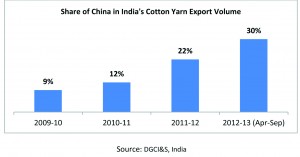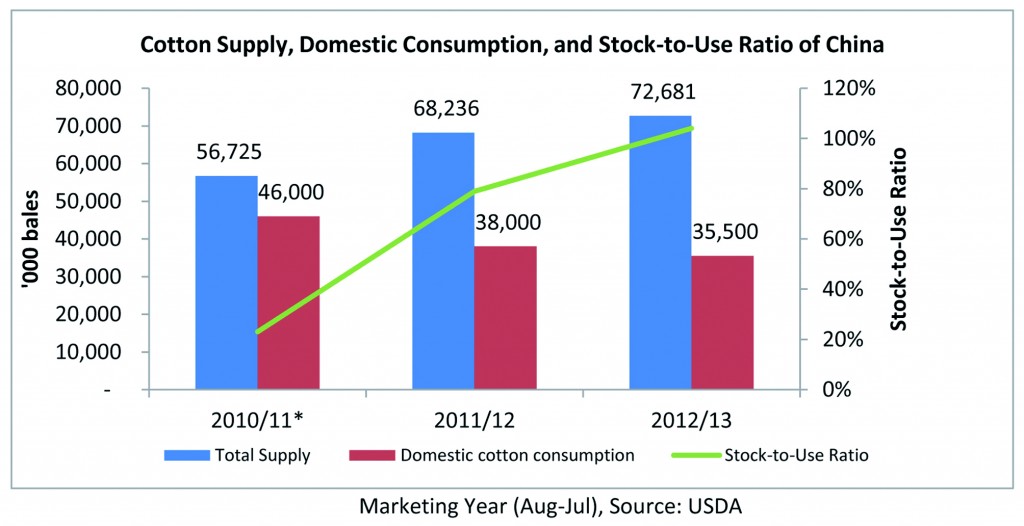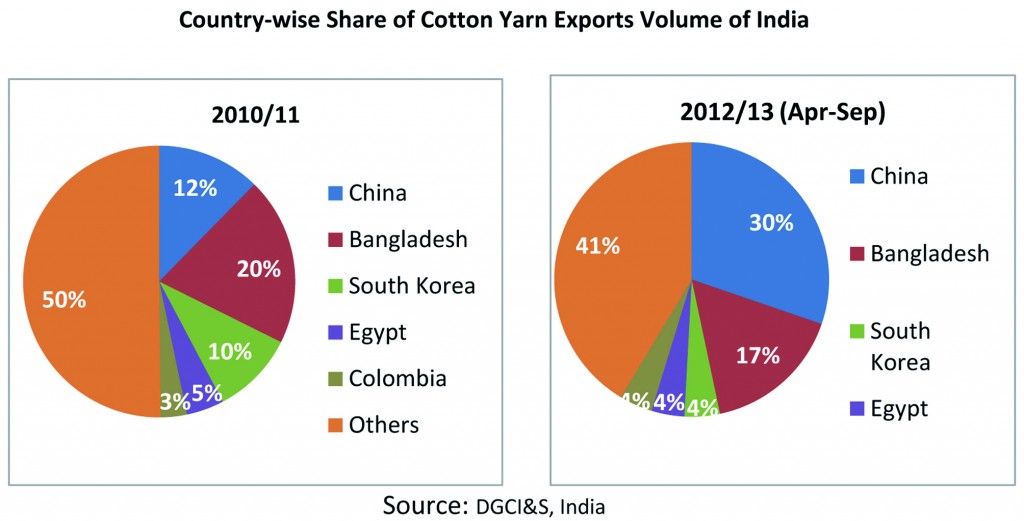Indian cotton spinning mills have mastered the art and science of intelligent spinning of cotton yarn. They have not only emerged as quality spinners, but also have strategically changed the direction of yarn exports to China and have restored profitability and the much-needed capacity utilisation.
 Cotton in spinning has long been one of the main strengths of the Indian cotton textile industry. It deploys world class technology and is considered the most organised sub-sector of the industry.
Cotton in spinning has long been one of the main strengths of the Indian cotton textile industry. It deploys world class technology and is considered the most organised sub-sector of the industry.
Further, India, being the second largest producer of cotton in the world, has an abundant supply of cotton for its spinning mills. The country produces more than 3,000 million kg of cotton, of which 13 per cent is over counts (more than 41s Ne).
Chinese, the new market for cotton yarn
Indian cotton spinners have been exporting cotton yarn to a number of countries. However, in recent years, the export pattern has changed a lot. Even a few years ago, South Korea and Bangladesh were the major export destinations for Indian cotton yarn. Their combined share of India’s exports stood at 26 per cent in 2009-10 and 30 per cent in 2010-11.
China, a dominant player in the global textile and apparel industry, contributed only nine per cent of Indian cotton yarn exports in 2009-10. This shot up to 30 per cent in the first six months of fiscal 2012-13 and the trend persisted in the subsequent months. On the other hand, the combined share of South Korea and Bangladesh has come down from 30 per cent in 2010-11 to 20 per cent in the first six months of 2012-13.

This shift in export destination can be partly attributed to the Chinese policy, which supports cotton price at a higher level than in other countries. To add to the woes of cotton spinners, China restricts imports of lower-priced cotton from the world market by means of a tariff rate quota. Though the total cotton supply of China went up during 2012-13, domestic consumption has come down from 46 million bales to 36 million bales due to its high price. The stock-to-use ratio has moved up from 23 per cent in 2010-11 to an unprecedented level of 104 per cent in 2012-13.
The high cotton price in the domestic market, coupled with restricted access to the international market, has forced Chinese spinners to shift to man-made and blend yarns. As a consequence, fabric manufactures have increased imports of cotton yarn. Indian spinners have successfully utilised this opportunity.

This change in the strategy of Indian cotton spinners and export of cotton yarn to China has added to their credibility in providing superior yarn at a reasonable price. Such a strategy has also provided a competitive advantage to spinners, helping them maintain a superior business performance. China produces more than 40 per cent of the world fabric output and is thus an attractive destination for Indian cotton spinners.
Is this trend sustainable?
Any reversal of the Chinese policy may turn the game on its head, making the Chinese market less lucrative to Indian spinners. At present, the cotton purchased by the Chinese Government is being stocked in warehouses. The resultant high prices make it difficult for domestic cotton spinners to obtain this cotton. It is estimated that the cotton reserve of China has touched a record level.
The release of this huge reserve at international price levels is an apparent option available to Chinese policy makers. This has the potential to disrupt the international cotton market via a huge impact on the direction of cotton price. If such a decision is taken, Chinese spinners will regain access to local cotton and the cotton yarn imports of China will decline markedly. Indian spinners would then have to reformulate their export strategy to remain competitive.